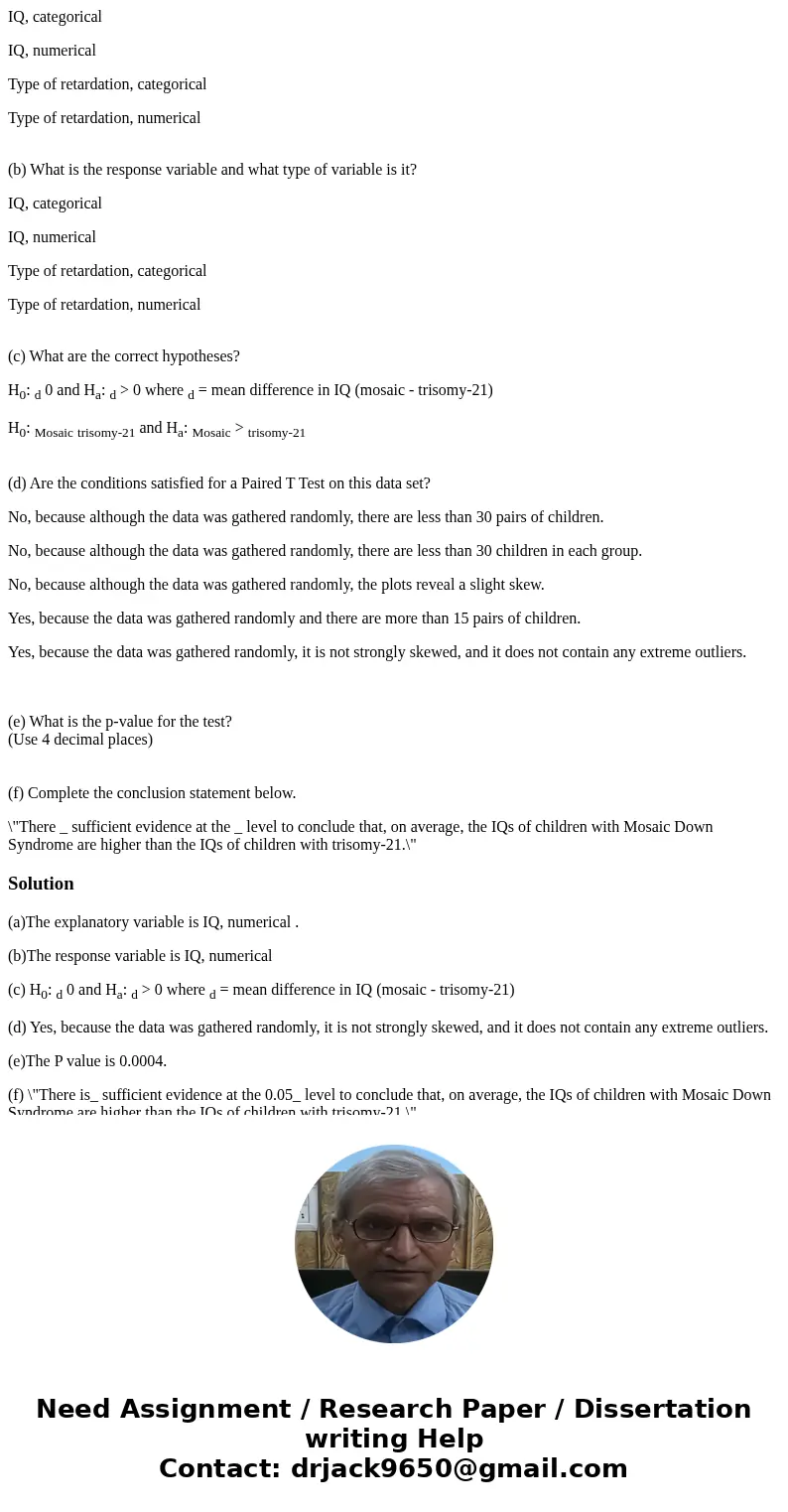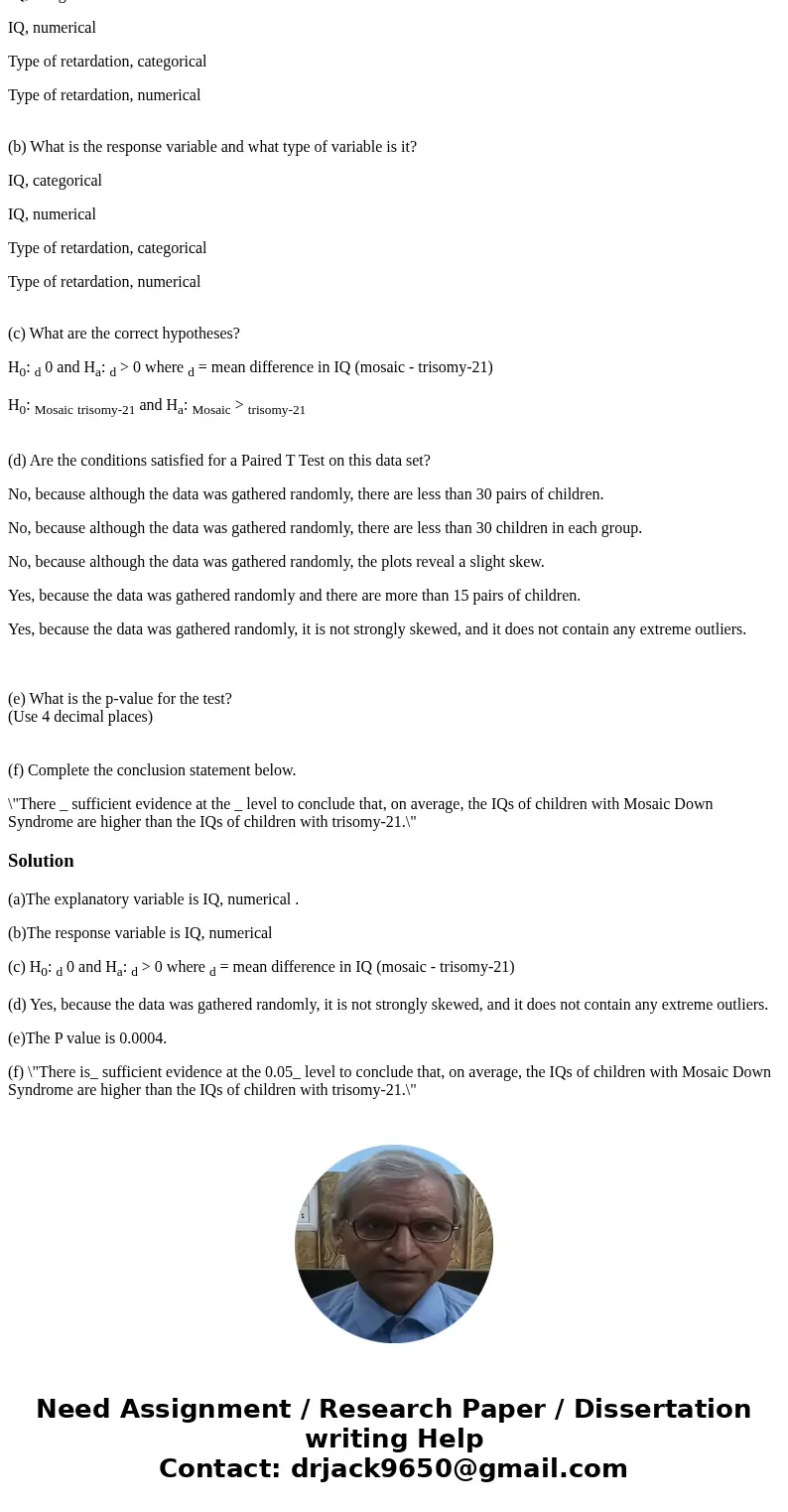IQ categorical IQ numerical Type of retardation categorical
IQ, categorical
IQ, numerical
Type of retardation, categorical
Type of retardation, numerical
(b) What is the response variable and what type of variable is it?
IQ, categorical
IQ, numerical
Type of retardation, categorical
Type of retardation, numerical
(c) What are the correct hypotheses?
H0: d 0 and Ha: d > 0 where d = mean difference in IQ (mosaic - trisomy-21)
H0: Mosaic trisomy-21 and Ha: Mosaic > trisomy-21
(d) Are the conditions satisfied for a Paired T Test on this data set?
No, because although the data was gathered randomly, there are less than 30 pairs of children.
No, because although the data was gathered randomly, there are less than 30 children in each group.
No, because although the data was gathered randomly, the plots reveal a slight skew.
Yes, because the data was gathered randomly and there are more than 15 pairs of children.
Yes, because the data was gathered randomly, it is not strongly skewed, and it does not contain any extreme outliers.
(e) What is the p-value for the test?
(Use 4 decimal places)
(f) Complete the conclusion statement below.
\"There _ sufficient evidence at the _ level to conclude that, on average, the IQs of children with Mosaic Down Syndrome are higher than the IQs of children with trisomy-21.\"
Solution
(a)The explanatory variable is IQ, numerical .
(b)The response variable is IQ, numerical
(c) H0: d 0 and Ha: d > 0 where d = mean difference in IQ (mosaic - trisomy-21)
(d) Yes, because the data was gathered randomly, it is not strongly skewed, and it does not contain any extreme outliers.
(e)The P value is 0.0004.
(f) \"There is_ sufficient evidence at the 0.05_ level to conclude that, on average, the IQs of children with Mosaic Down Syndrome are higher than the IQs of children with trisomy-21.\"


 Homework Sourse
Homework Sourse